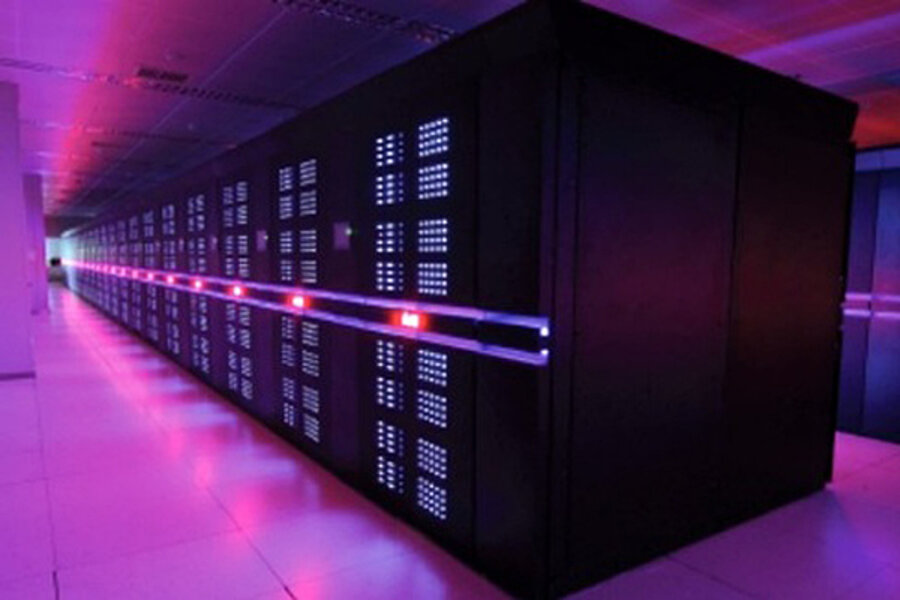China supercomputer clocks in as world's most powerful
Loading...
Those nostalgic for the postwar era take heart: There are still computers that take up an entire room.
It's just that today, they're a bit faster than the Electronic Numerical Integrator And Computer, the first general purpose digital computer. First announced in 1946 and in operation until 1955, ENIAC, which took up 1,800 square feet and weighed 60,000 lbs., could perform up to 5,000 calculations per second, as long as it was addition. For division problems, it could do 38 per second.
Today's fastest computer? Almost 34,000 trillion calculations per second.
That distinction belongs to Tianhe-2, a supercomputer developed by China’s National University of Defense Technology. According to TOP500, a project that twice a year measures the world's 500 fastest supercomputers, Tianhe-2 is about twice as powerful as the second fastest, the Titan supercomputer based at the US Department of Energy's Oak Ridge National Laboratory.
The TOP500 list is compiled by computer scientists at the University of Mannheim, Germany; Lawrence Berkeley National Laboratory; and the University of Tennessee, Knoxville. Researchers measure computing power in "flop/s," that is, floating point operations per second. The bog-standard 2.5 gHz processor found in an office laptop is theoretically capable of 10 billion flop/s, or 10 gigaflop/s.
TOP500 measured the Tianhe-2 at 33.86 quadrillion flops/s, or 33.86 petaflop/s. To put things in perspective, that would be the equivalent of stringing together about 3.4 million standard processors.
Which is sort of what they did, but with faster processors. According TOP500, the Tianhe-2 is composed of 16,000 nodes, each of which has two Intel Xeon Ivy Bridge processors and three Xeon Phi processors.
Intel chips remain a popular choice for those wanting to build supercomputers. According to TOP500, the Santa Clara, Calif. company provides the processors for more than four fifths of the 500 fastest supercomputers.
The processors may be American, but the rest is all Chinese, according to University of Tennessee computer scientist and TOP500 editor Jack Dongarra. “Most of the features of the system were developed in China, and they are only using Intel for the main compute part. That is, the interconnect, operating system, front-end processors and software are mainly Chinese,” said Dr. Dongarra in a press release.
Tianhe-2, whose name means "Milky Way 2," marks China's return to the top position of the list since November 2010, when the machine's earlier incarnation, Tianhe-1A reigned. Tianhe-1A, which was clocked at 2,566 billion flop/s, now ranks at number 10.
If processor technology continues to advance at the same pace that it has in the past, two decades from now we'll all be walking around with Tianhe-2's in our pockets, or perhaps embedded in our contact lenses. As TUAW noted in 2011, the iPad 2 has more processing power than the supercomputers of the 1990s.






